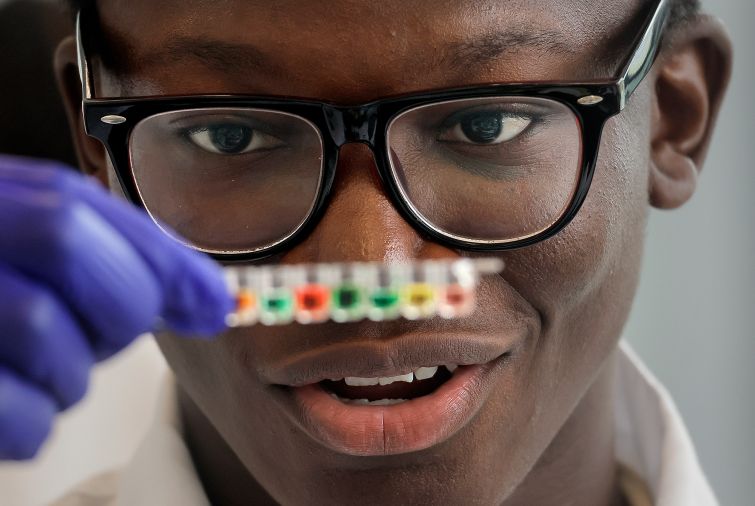The State of the Top 3 U.S. Life Sciences Hubs
In Boston, San Francisco and San Diego, signs of a slowdown in life sciences leasing and sales abound as 2023 closes
By Greg Cornfield November 30, 2023 10:15 am
reprints
The U.S. life sciences real estate market is reassessing the landscape and regaining its footing amid larger questions and concerns about oversaturation and receding growth.
On a national basis, life sciences property deal volume was down more than 60 percent after the first half of the year compared to 2022 as investors grappled with interest rate volatility and other macroeconomic and sector-specific headwinds. With capital so guarded, demand has been choked off, according to market studies by JLL (JLL).
Investment levels the past four quarters for life sciences have been far more akin to 2018 and 2019 than 2020 and 2021, leading to a broad reset in valuations that has permeated the sector. For instance, to end 2021, tenant requirements for space across the top eight life sciences markets in the U.S. stood at over 25 million square feet. By mid-2023, that number fell to just over 10 million square feet.
The spikes in demand and investment after the pandemic hit in 2020 have been quickly overshadowed by questions of oversupply, with a wave of lab space openings across the country reflecting a national pipeline figure that is three times that of 2019. And that will surely put more pressure on rents and occupancy.
However, JLL said the life sciences market is poised to bounce back, assuming a pause in interest rate hikes, as top venture capital firms have raised record amounts of dry powder. Tying together multiple third-quarter market reports from JLL, here’s how the three top U.S. life sciences markets are doing:
Greater Boston
Life sciences demand in Boston showed long-awaited positive signs of growth in the third quarter, with $1.3 billion of VC raised in September for the best month since spring 2022. Demand surpassed 2 million square feet for the first quarter in 13 months. That increase has not yet translated into more leases being signed, but rumored commitments could soon add 200,000 square feet before the end of the year.
That would help as leasing was historically low in the third quarter with 214,000 square feet signed. Further, 80 percent of leases signed this year have been by early-stage companies needing less than 30,000 square feet each, and this year is set to have the fewest life sciences deals signed in a decade.
Life sciences vacancy in Greater Boston increased again as 1.5 million square feet was delivered vacant, and more large subleases were added to the market. Greater Boston’s vacancy is expected to rise from the now 17.6 percent rate to above 2o percent over the next couple quarters.
With markets in “price discovery” mode, the volume of buildings traded in Greater Boston has fallen significantly, too, and 2023 will likely finish as the slowest year for Boston lab sales since 2017. Just one small deal took place in the third quarter: Phase 3 acquired 7 Channel Center for $24 million from Westbrook. However, Boston Properties (BXP) announced this month that it agreed to sell a 45 percent interest in two life sciences development properties that are valued at $1.66 billion.
San Francisco Bay Area
VC funding is ramping up in the nation’s second-biggest life sciences market, surpassing $2 billion for the first time in three quarters. The Bay Area was home to three of the five largest VC rounds in the quarter, including the biggest: Elon Musk’s Neuralink raised $280 million.
The life sciences leasing volume in the Bay Area was 441,000 square feet in the third quarter, with smaller deals under 30,000 square feet accounting for 76 percent. However, the market is starting to see larger requirements emerging, per JLL.
The vacancy rate rose 270 basis points to 16 percent in the third quarter, with another 2 million square feet of unleased space expected to be delivered in the final period.
Asking rents remained stable quarter to quarter at $6.66 per square foot per month, but that is 3.8 percent below the peak in 2022. Rents are likely going to experience downward pressure with the amount of new development on the way and the highest rate of sublease space hitting the Bay Area in nearly 20 years.
San Diego County
Life sciences capital activity in San Diego County also showed new positive signs as biotech companies hauled in $1 billion, exceeding the combined total brought in during the first two quarters of the year.
“Compared to the historical quarterly average of $380 million, the Q2 and Q3 numbers are a major sign of optimism in an otherwise difficult market,” JLL’s report read. “Additionally, the IPO market, which has been frozen for the last 18 months, showed signs of thawing. Two San Diego companies, Turnstone Biologics and RayzeBio, went public during the quarter, raising a combined $438 million.”
However, San Diego’s leasing hit a low point in the third quarter, declining for the fourth quarter in a row, recording the least amount of space signed since the start of 2017 with just 167,957 square feet of gross leasing. The fourth quarter is expected to see much stronger activity, though, with approximately 300,000 square feet of new leases under negotiations in the core cluster.
Class A and B average asking rents in San Diego’s core cluster declined slightly from the secone quarter to $6.27 per square foot in the third quarter. The large amount of new supply coming to the market in the next 24 months is causing landlords to adjust asking rents and provide enhanced leasing concessions, according to JLL. Vacancy in San Diego also increased 340 basis points in the third quarter to 10 percent for the overall market.
Gregory Cornfield can be reached at gcornfield@commercialobserver.com.


